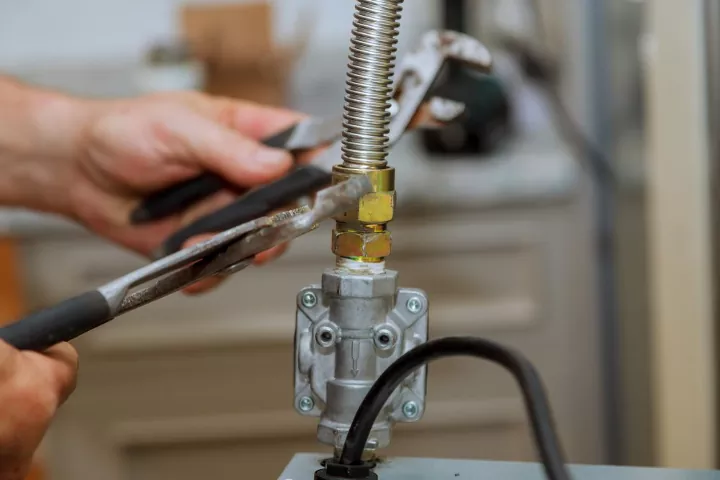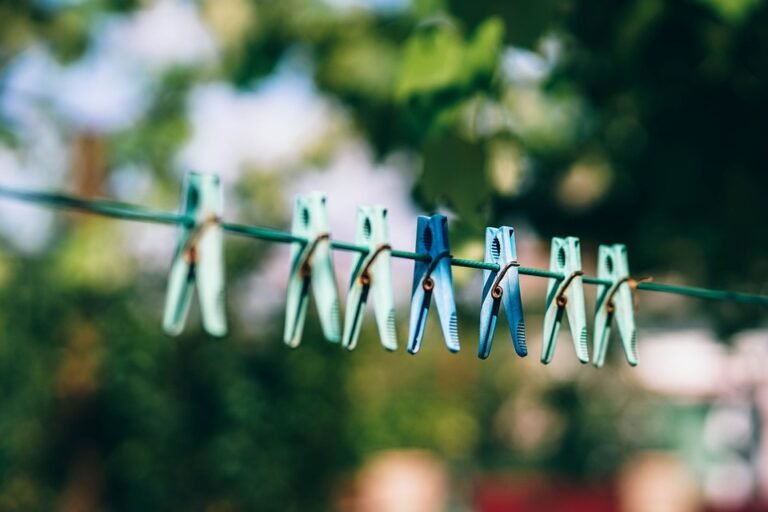Types of Dryers: Advantages and Considerations for Each Type
When it comes to doing laundry, having a reliable and efficient dryer is essential. Dryers have revolutionized the way we handle wet clothes, saving us time and effort in the laundry process. With a wide range of dryers available in the market, understanding the different types of dryers and their features is crucial in making the right choice for your laundry needs.
In this comprehensive guide, we will delve into the world of dryers and explore the various options that are available. From traditional vented dryers to innovative heat pump dryers, we will cover everything you need to know to make an informed decision.
What are The Importance of a Quality Dryer?
A quality dryer is an indispensable appliance in any modern household. It ensures that your clothes are dried efficiently, eliminating the hassle of hanging them up to dry and waiting for them to be ready. A good dryer can also help prevent clothes from developing musty odors or mildew due to prolonged dampness.
Understanding Types of Dryers
Dryers are categorized based on their operation and heat source. Vented dryers, which expel hot, moist air through a duct, are a classic choice known for their effectiveness. Condenser dryers use a heat exchange system to collect moisture, while heat pump dryers recycle hot air, making them highly energy-efficient that each has its parts of a dryer. Additionally, gas dryers operate using natural gas, while electric dryers use electricity to generate heat.
What are the different types of dryers?
The different types of dryers are:
- Vented Dryers
- Condenser Dryers
- Heat Pump Dryers
- Gas Dryers
- Electric Dryers
- Spin Dryers
- Combined Washer-Dryers
- Mechanical Steam Compression Dryers
- Convectant Drying
- Solar Clothes Dryer
- Microwave Dryers
- Ultrasonic Dryers
- Hybrid Dryers
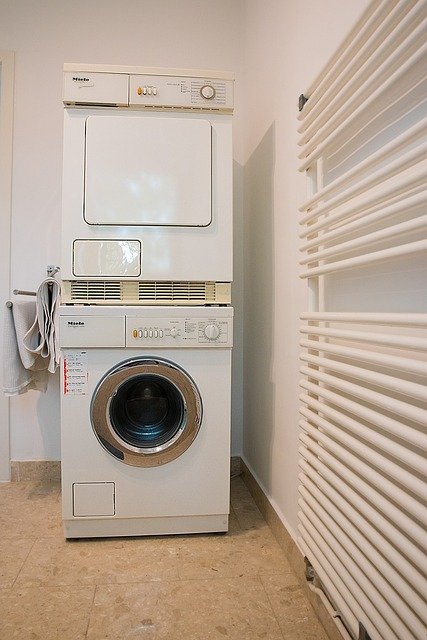
Vented Dryers: Traditional Drying Method
Understanding Vented Dryers
Vented dryers are a popular and traditional method of drying clothes. These dryers work by releasing hot, moist air outside through a duct or vent. The process involves drawing in ambient air, heating it, tumbling clothes in the warm air, and then expelling the damp air outside.
What are the Advantages of Vented Dryers?
Vented dryers have several advantages. Firstly, they are often more affordable compared to other types of dryers. Secondly, they tend to dry clothes faster, thanks to the high heat output. Additionally, vented dryers are excellent for large loads and heavy fabrics.
What are the Drawbacks of Vented Dryers?
Despite their popularity, vented dryers come with some drawbacks. One major downside is the need for an external vent or duct, which may not be suitable for all living spaces. Additionally, vented dryers can be less energy-efficient, as they expel heated air along with the moisture.
Condenser Dryers: Efficient and Versatile
How Condenser Dryers Work?
Condenser dryers provide an alternative to vented dryers, as they do not require an external vent. Instead, they use a heat exchange system to cool and condense the moist air from the drying process. The collected water is then either stored in a container or drained away through a pipe.
What are the Benefits of Condenser Dryers?
Condenser dryers offer several benefits. They are highly versatile and can be installed in various locations, making them ideal for apartments and smaller spaces. Additionally, since they don’t need an external vent, they are easier to set up and can be more flexible in terms of positioning.
What are the Considerations for Condenser Dryers?
While condenser dryers are efficient and versatile, they have certain considerations to keep in mind. Regular maintenance, such as emptying the water container, is essential to ensure optimal performance. Moreover, they may take longer to dry clothes compared to vented dryers.
Heat Pump Dryers: Eco-Friendly Drying Innovation
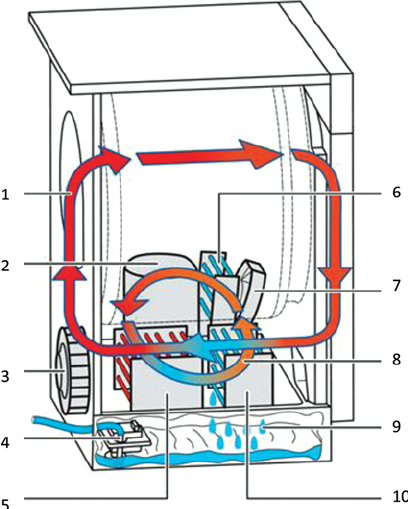
How Heat Pump Dryers Work?
Heat pump dryers are known for their impressive energy efficiency. They work by using a heat pump to recycle and reuse the hot air generated during the drying process. The heat pump technology extracts moisture from the air, allowing it to be reheated and circulated within the drum.
What are The Advantages of Heat Pump Dryers?
Heat pump dryers boast significant advantages, particularly in energy savings. They consume less electricity compared to traditional dryers, resulting in reduced utility bills. Moreover, the lower drying temperatures can be gentler on clothes, making them suitable for delicate fabrics.
What are The Factors to Consider When Choosing a Dryer?
When selecting a dryer, several factors come into play. Consider the available space, installation requirements, and budget. Think about your laundry habits, load size, and types of fabrics you frequently dry. By weighing these factors and understanding the various types of dryers available, you can make an informed decision and find the perfect dryer to meet your needs.

Gas Dryers: Power and Performance Combined
What are The Working Mechanism of Gas Dryers?
Gas dryers operate using natural gas as their heat source instead of electricity. They burn gas in a combustion chamber to produce heat, which is then used to dry the clothes in the drum. The combustion gases are vented outside through a vent or exhaust.
What are The Advantages of Gas Dryers?
Gas dryers offer several advantages, starting with their faster drying times compared to electric dryers. They can heat up quickly and maintain high temperatures, making them efficient for large loads and heavy fabrics. Additionally, gas dryers are often preferred by users who want to reduce their electricity consumption and opt for a more cost-effective option.
What are The Considerations for Gas Dryers?
While gas dryers are powerful and efficient, they require a gas supply line and proper ventilation for exhaust fumes. It’s essential to ensure that your living space is equipped for a gas dryer installation. Additionally, gas dryers may have a higher upfront cost than electric dryers, but their long-term energy savings can offset this initial investment.
Electric Dryers: Widely Used and Convenient
What are The Mechanism of Electric Dryers?
Electric dryers are the most common type of dryers found in households. They work by using electricity to power a heating element that warms up the air inside the dryer. The hot air is then circulated through the drum to dry the clothes effectively.
What are The Advantages of Electric Dryers?
Electric dryers come with several advantages, including their widespread availability and ease of installation. They do not require a gas supply, making them suitable for homes without gas connections. Electric dryers are also relatively less expensive upfront compared to gas dryers.
What are The Energy Efficiency and Considerations?
While electric dryers are easy to use and widely available, they may not be as energy-efficient as heat pump or gas dryers. However, some modern electric dryers are designed with energy-saving features to reduce their environmental impact and operating costs. It’s essential to look for Energy Star-rated models for increased energy efficiency.
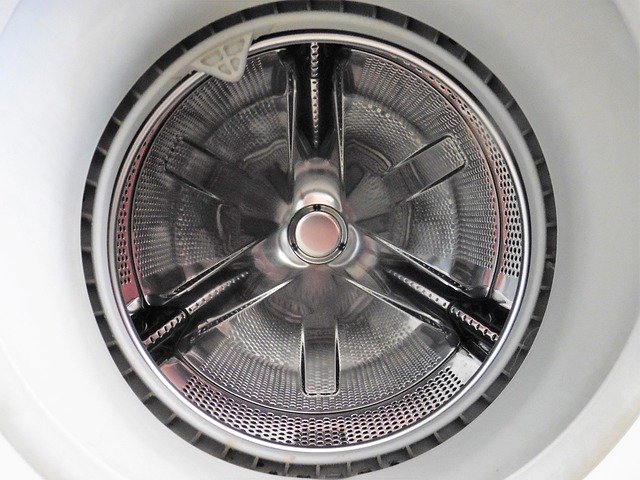
Spin Dryers: Compact and Speedy Solutions
Understanding Spin Dryers
Spin dryers are compact and portable appliances designed to remove excess water from clothes after washing. They are not traditional tumble dryers but can significantly reduce the drying time by spinning clothes at high speeds, forcing water out.
What are The Benefits of Spin Dryers?
Spin dryers are popular for their compact size, making them ideal for small living spaces, dorms, or RVs. They consume less energy compared to regular dryers, providing cost savings. Additionally, spin dryers are gentle on clothes, making them suitable for delicate fabrics that may not withstand the heat of traditional dryers.
What are The Limitations of Spin Dryers?
While spin dryers are effective for removing excess water, they do not fully dry clothes like traditional dryers. Users may need to hang the clothes or use a regular dryer for further drying. Spin dryers also have smaller capacities, so they are best suited for smaller loads of laundry.
Combined Washer-Dryers: Space-Saving Marvels
How Combined Washer-Dryers Work?
Combined washer-dryers, also known as washer-dryer combos, offer a 2-in-1 laundry solution. They integrate both washing and drying functions in a single machine. After the washing cycle, the same drum switches to a drying mode, eliminating the need to transfer clothes between machines.
What are The Advantages of Combined Washer-Dryers?
The primary advantage of washer-dryer combos is their space-saving design, making them perfect for apartments and homes with limited laundry room space. They are also convenient for those who don’t have the space or budget for separate washing and drying machines.
What are The Considerations for Combined Washer-Dryers?
While combined washer-dryers are space-efficient, they may have limitations in terms of drying capacity and cycle time. Users may need to divide large loads into smaller ones to ensure effective drying. Additionally, some users prefer the versatility of having separate machines to perform washing and drying simultaneously.
Factors to Consider When Choosing a Dryer
What are The Capacity and Load Size?
One of the essential factors to consider when choosing a dryer is its capacity. Determine the amount of laundry you typically do and choose a dryer that can handle your average load size comfortably. A larger capacity dryer can save time and energy by allowing you to dry more clothes in a single cycle.
What are The Energy Efficiency and Operating Costs?
Energy efficiency is crucial to reduce your carbon footprint and lower utility bills. Look for dryers with energy-saving features or those labeled with Energy Star ratings. While some dryer types may have higher upfront costs, their energy efficiency can lead to long-term savings.
Ventilation and Installation
Consider the ventilation requirements of the dryer you choose. Vented dryers need an external vent or duct to expel moist air, while condenser and heat pump dryers may have different ventilation needs. Ensure that your living space is equipped for the chosen dryer type’s installation requirements.
What are The Dryer Features and Programs?
Modern dryers come with various features and drying programs to cater to different fabrics and preferences. Look for options such as sensor drying, steam functions, and customizable drying cycles to enhance the drying process and protect your clothes.
Budget and Affordability
Set a budget for your dryer purchase and explore options that fit within that range. Keep in mind that different types of dryers may have varying price points, and while some may require a higher initial investment, their long-term benefits may justify the cost.
User Reviews and Recommendations
Before making a final decision, read user reviews and seek recommendations from friends or family who have experience with the specific dryer type you are interested in. Learning from others’ experiences can provide valuable insights and help you make an informed choice.
Mechanical Steam Compression Dryers
Mechanical steam compression dryers use steam generated by a boiler or steam generator to dry clothes. The steam is circulated through the clothes, and the heat from the steam evaporates the moisture, leaving the clothes dry.
Convectant Drying
Convectant drying is a method of drying clothes that uses forced convection to circulate heated air through the clothes. The hot air absorbs moisture from the clothes, and then it is circulated away, leaving the clothes dry.
Solar Clothes Dryer
A solar clothes dryer is an eco-friendly option that uses solar energy to dry clothes naturally. It typically consists of a clothesline or drying rack placed in direct sunlight to harness solar heat and wind for drying clothes.
Microwave Dryers
Microwave dryers use microwave radiation to heat and dry clothes quickly. The microwaves penetrate the clothes, causing water molecules to vibrate and generate heat, resulting in faster drying times.
Ultrasonic Dryers
Ultrasonic dryers utilize high-frequency vibrations to evaporate moisture from clothes. These vibrations create a fine mist of water that can be easily evaporated, enabling faster and more efficient drying.
Hybrid Dryers
Hybrid dryers combine two or more drying technologies to offer enhanced performance and efficiency. For example, a hybrid dryer could integrate both heat pump and condenser drying methods to optimize energy usage.
Conclusion: Finding the Perfect Dryer for You
Selecting the right dryer is essential to meet your laundry needs and preferences. Whether you opt for the traditional vented dryer, the energy-efficient heat pump dryer, the convenience of a combined washer-dryer, or any other type, consider the factors that align with your lifestyle and home setup. With the variety of dryers available, you can find the perfect fit to make the laundry process more efficient and enjoyable. Remember to prioritize energy efficiency, capacity, and ventilation requirements to ensure a dryer that serves you well for years to come.
FAQs about Types of Dryers
How do Vented Dryers work?
Vented dryers operate by expelling hot, moist air through a vent or duct to the outside. They draw in ambient air, heat it up, tumble the clothes in the warm air, and then release the damp air through the vent.
What are the advantages of Vented Dryers?
Vented dryers are often more affordable, dry clothes faster, and are suitable for large loads and heavy fabrics due to their high heat output.
What are the drawbacks of Vented Dryers?
Vented dryers require an external vent or duct, which may not be feasible in all living spaces. Additionally, they can be less energy-efficient, expelling heated air along with moisture.
How do Condenser Dryers work?
Condenser dryers use a heat exchange system to cool and condense moist air from the drying process. The collected water is either stored in a container or drained away through a pipe.
What are the benefits of Condenser Dryers?
Condenser dryers are versatile and can be installed in various locations. They don’t need an external vent, making them easier to set up and more flexible in positioning.
What considerations apply to Condenser Dryers?
Regular maintenance, such as emptying the water container, is necessary for optimal performance. Condenser dryers may take longer to dry clothes compared to vented types.
How do Heat Pump Dryers work?
Heat pump dryers recycle and reuse hot air produced during the drying process. The heat pump extracts moisture from the air, reheats it, and circulates it back into the drum.
What are the advantages of Heat Pump Dryers?
Heat pump dryers are highly energy-efficient, consuming less electricity compared to traditional dryers. They are also gentle on clothes, suitable for delicate fabrics.
What factors should be considered when choosing a Dryer?
Factors like capacity, energy efficiency, ventilation requirements, available space, and budget play a significant role in choosing the right dryer.
What are Hybrid Dryers?
Hybrid dryers combine two or more drying technologies to optimize performance and efficiency. For example, a hybrid dryer could integrate heat pump and condenser methods.


